
Gout is a common form of inflammatory arthritis that affects approximately 9 million people in the United States, and it is on the rise – especially in women. But gout is still not well understood, leaving many people unsure of their risks and options.
A survey of 1,000 women conducted by HealthyWomen in June 2023 exposes how little people know about gout. Overall, respondents who know someone with gout were more likely to be informed about gout than people who did not know someone with gout.
Only 2% of respondents reported having gout, although 43% said they knew someone with gout. Black women were three times more likely than white women to report having gout and significantly more likely to know someone with gout than white and Hispanic/Latina women.
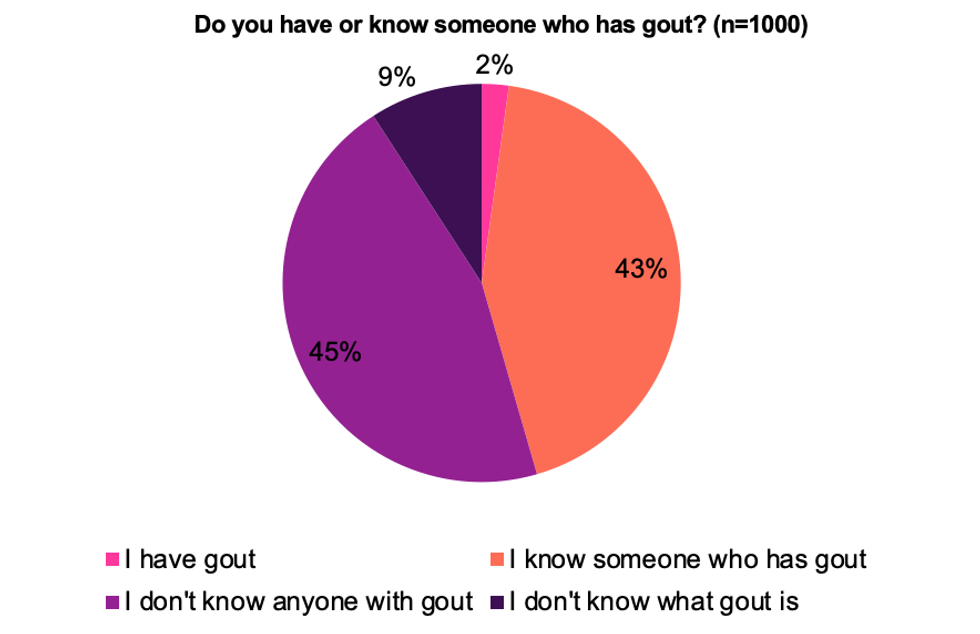
One in 10 respondents did not know which parts of the body gout can affect. In fact, gout commonly affects the big toe and other joints, but it can also affect organs such as the kidneys, heart and eyes. Respondents who knew someone with gout were significantly more likely to correctly answer a question about what parts of the body can be affected by gout compared to people who did not know what gout is.
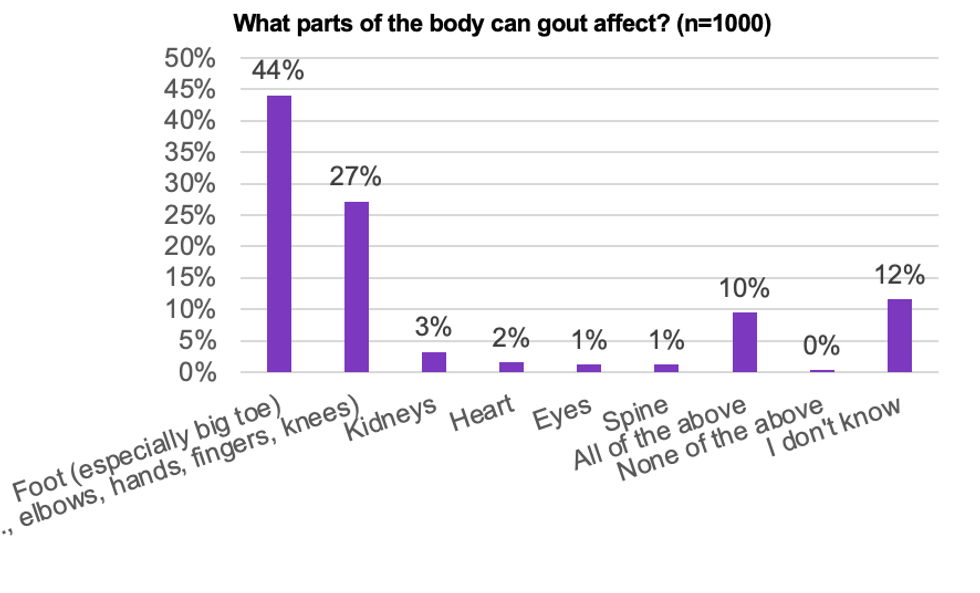
Not all respondents were clear about who is at risk of contracting gout. Although the majority (62%) correctly identified that people under the age of 45 can get gout, a third said they did not know and 7% were wrong in saying that gout only affects older people. The truth is that gout can appear even at a young age, especially in those who suffer from chronic kidney disease.
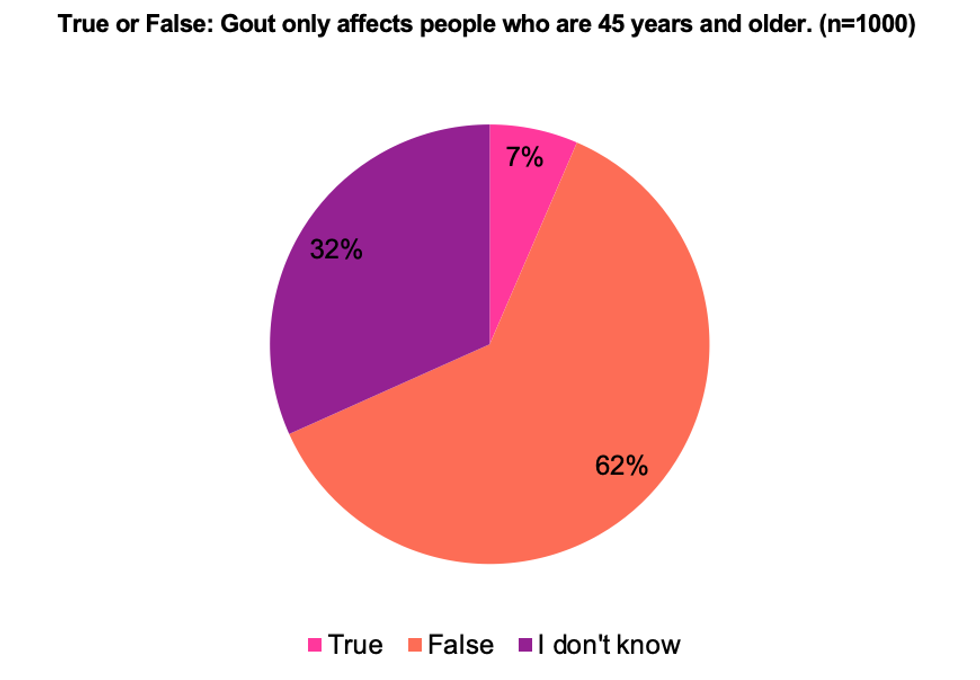
Respondents were closer on gender, with 8 in 10 correctly identifying that while both men and women can get gout, it is substantially more common in men.
The survey results revealed opportunities for better education about the causes and treatment approaches of gout.
The main causes of gout include genetics and hormonal changes, although diet and weight can also play a role. Two in 5 respondents said they believe that an unhealthy weight or lifestyle, such as poor diet or excessive alcohol consumption, is the main cause of gout. About the same percentage said they don’t know if that’s true or not. Younger respondents (ages 35 to 44) were more likely than those ages 45 to 54 to answer this question wrong (45% vs. 34%). Respondents who knew someone with gout were also more likely to blame weight and lifestyle than those who didn’t know someone with gout (32% vs. 26%). Unfortunately, the common assumption that gout is caused primarily by lifestyle choices results in a stigma associated with the disease and some patients blaming themselves for their symptoms.
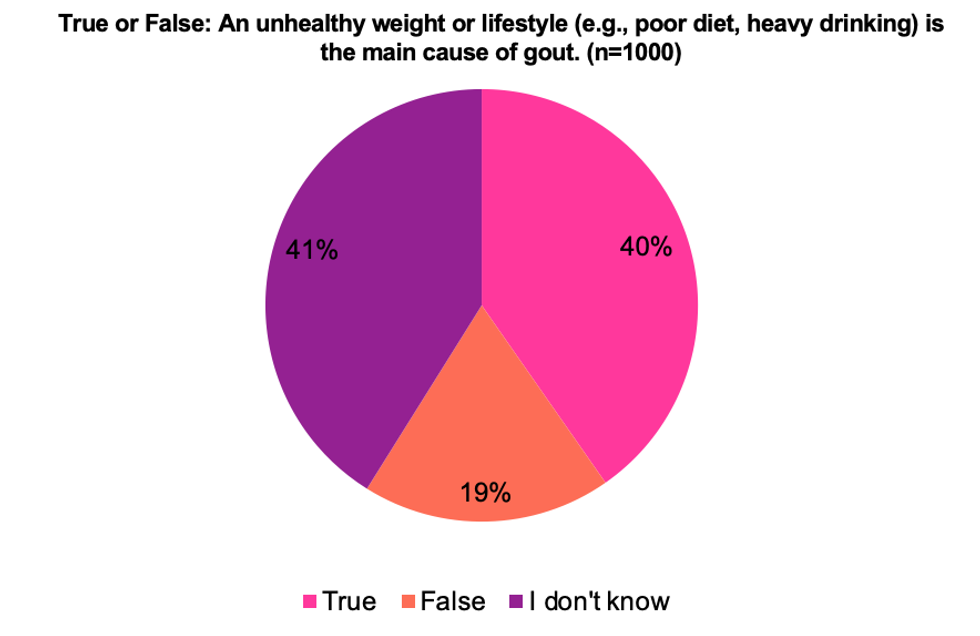
Gout is caused by the buildup of uric acid in the blood, which creates small needle-shaped crystals. It is these crystals that settle in the joints and other organs, causing pain and inflammation. But what causes this accumulation? The answer is that many things contribute to uric acid levels. Nearly 1 in 3 respondents correctly identified that what they eat can raise uric acid levels, while about 1 in 5 identified genetic causes, which is also correct. One in 10 respondents did not know what contributes to high uric acid levels in the body.
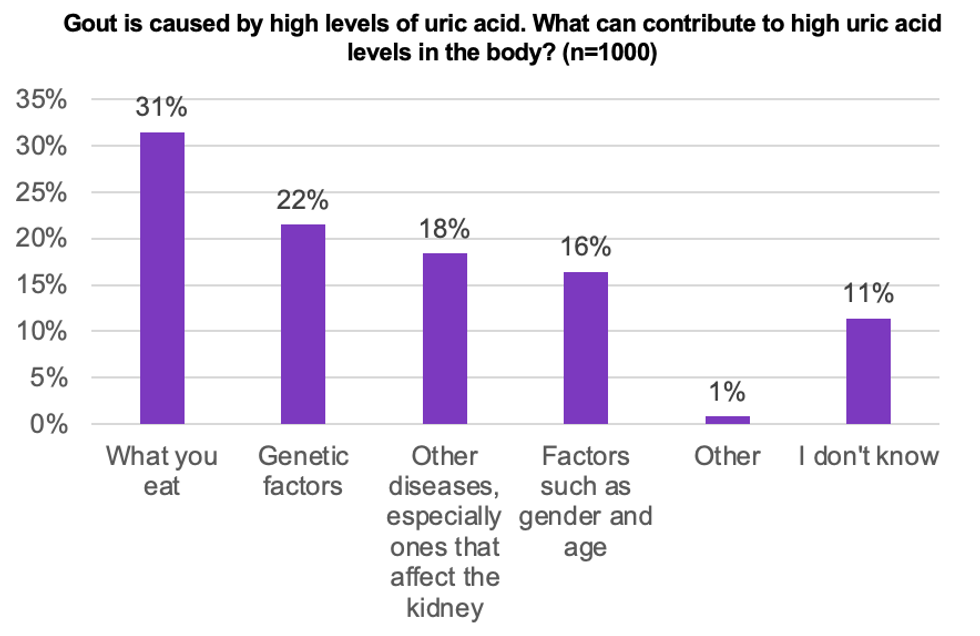
Many respondents were also unclear about when gout should be treated. Even between gout attacks, those living with gout should take steps to actively manage the condition. However, 3 in 10 respondents said they don’t know if gout needs to be treated between flares and 9% incorrectly said it doesn’t. Although 6 in 10 respondents correctly identified that it is false to say that gout should only be treated during a flare, the lack of understanding about when to treat gout also points to educational opportunities. People who know someone with gout were much less likely to say they don’t know that gout needs to be treated between flares, compared to people who don’t know anyone with gout (56% vs. 71%).
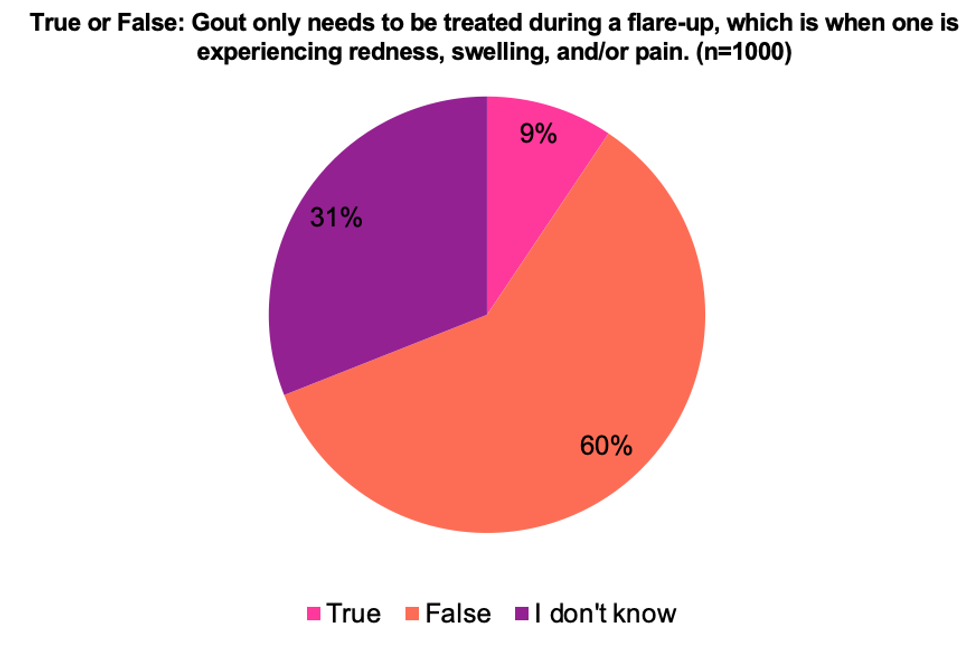
Gout Quick Facts
- Gout is a type of arthritis that causes inflammation of the joints, which can lead to severe pain, redness, and discomfort in the joints.
- Gout can appear with a flare-up, often appearing at night with severe pain.
- A telltale sign of gout is pain in the big toe, although women with gout often also experience pain in other joints, such as the fingers or elbows.
- Gout is usually diagnosed based on symptoms and the appearance of the joints, but doctors may use diagnostic tests such as fluid tests, blood tests, x-rays, or ultrasounds.
- Diet, lifestyle, hormonal factors, and genetics can all contribute to gout.
- Gout treatment includes medications to reduce the swelling and pain of gout attacks and to prevent gout complications by reducing levels of uric acid, the underlying cause of gout.
This resource was created with the support of Horizon Therapeutics.
Related articles on the Web







